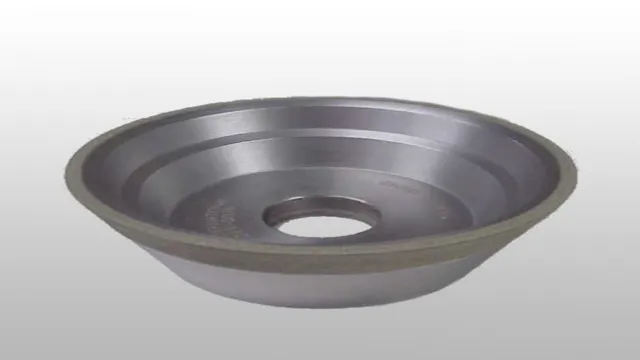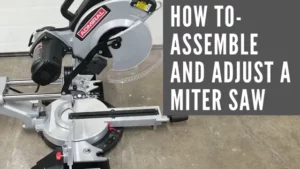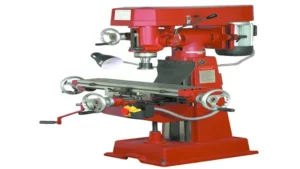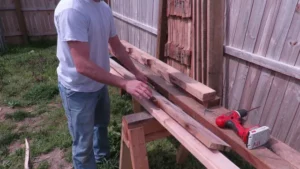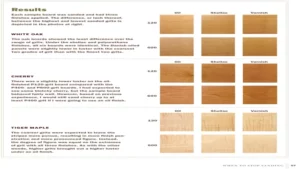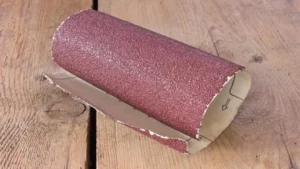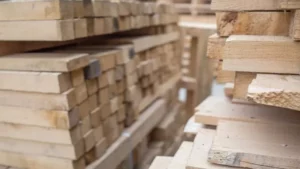If you’re looking to get the most out of your CBN wheel, choosing the right grit is crucial. Your wheel’s grit can make all the difference when it comes to the quality of your sharpening, as well as the speed at which you’re able to get the job done. But with so many options to choose from, it can be difficult to know where to start.
Not all grits are created equal, and choosing the wrong one could result in uneven sharpening or even damage to your tools. So how do you make the right choice? It all comes down to understanding your needs and the material you’re working with. In general, a higher grit will produce a finer finish, making it ideal for delicate and precise sharpening.
Lower grit wheels are better suited for heavier duty work, such as shaping or repairing tools. However, there are many variations in between, and different wheels may be better suited for specific types of tools or materials. Ultimately, the best way to determine the right grit for your CBN wheel is through trial and error.
Experiment with different grits and pay attention to the results. Once you find the perfect match, you’ll be able to enjoy fast, effective sharpening that will keep your tools in top condition for years to come.
Understanding CBN Wheels
If you’re a lathe tool user, you may be wondering what grit CBN wheel would be best for your tools. CBN (cubic boron nitride) wheels are known for their durability and ability to sharpen even the hardest metals. The grit level you choose will depend on the type of tool you’re sharpening.
For roughing tools, a coarser grit, such as 80 or 120, would be best to quickly remove material and reshape the tool. Finishing tools, on the other hand, require a finer grit, such as 220 or 350, to achieve a smooth edge. It’s important to note that higher grit levels will produce sharper edges, but require more time and effort to achieve.
Ultimately, the best grit level for your lathe tools will depend on your specific needs and preferences.
What is a CBN Wheel?
CBN wheel If you’re an experienced grinder, you might have come across the term “CBN wheel” at some point. CBN (cubic boron nitride) is a type of superhard material, second only to diamond in its hardness. A CBN wheel is essentially a grinding wheel made of CBN particles bonded together with other materials, such as resin or metal.
Compared to traditional wheels made of aluminum oxide or silicon carbide, CBN wheels offer many advantages, such as faster cutting speed, longer service life, and cooler cutting temperature. They are particularly useful for grinding hard materials like hardened steel, cast iron, and superalloys. However, due to their high cost, CBN wheels are not suitable for all grinding tasks and are mostly used in industrial and professional settings.
Overall, if you’re looking for a cutting-edge grinding tool that can enhance your productivity and quality, a CBN wheel might be worth considering.
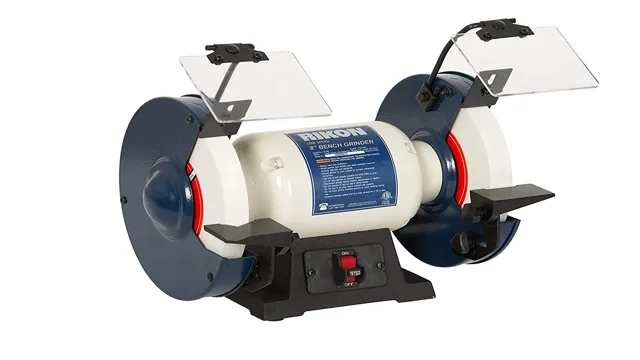
Advantages of CBN Wheels
CBN wheels have been gaining popularity in recent years due to their numerous advantages over traditional grinding wheels. CBN stands for cubic boron nitride, which is an abrasive material that is second in hardness only to diamond. This means that CBN wheels are highly wear-resistant and can maintain their shape and sharpness for longer periods of time.
Compared to traditional grinding wheels, CBN wheels can handle higher temperatures without warping or losing their abrasive properties, making them ideal for high-speed, heavy-duty grinding applications. Additionally, CBN wheels generate less heat during grinding, which helps to reduce the risk of thermal damage to the workpiece. Overall, CBN wheels offer superior performance and durability, making them an excellent choice for both industrial and precision grinding applications.
Grit Sizes and Their Uses
When it comes to choosing the right grit size for your CBN wheel for lathe tools, it all depends on what you plan on using it for. Different grit sizes serve different purposes, so it’s important to choose the right one for the job at hand. For roughing and shaping, a lower grit size, typically between 80 and 180, is best.
This will help to quickly remove excess material and shape your tool into the desired form. For finishing and sharpening, a higher grit size, around 600 to 1200, is recommended. This will help to achieve a smooth and polished surface and ensure a sharp edge for your lathe tools.
Ultimately, the grit size you choose will depend on the specific task you need to complete, so make sure to consider your needs carefully before making a selection.
Grit Comparison Chart
The grit comparison chart is an essential tool for anyone involved in metalworking, woodworking, or other trades that involve sanding, grinding, or polishing. It provides a clear breakdown of the different grit sizes and their respective applications, making it easy to select the right abrasive for any given task. Grit sizes range from coarse (20-40) to fine (1200+), with each size designed to remove different levels of material.
Coarse grits are ideal for heavy-duty grinding, removing rust, and shaping rough wood or metal. Medium grits (60-240) are suitable for surface prep, sanding down rough spots, and removing light coatings. Finally, fine grits (320-1200+) are used for final finishing, polishing, and honing surfaces to a high sheen.
Whether you’re a novice or a pro, understanding the different grit sizes and their uses is critical to achieving the perfect finish every time.
Choosing the Right Grit Size for Lathe Tools
When it comes to choosing the right grit size for lathe tools, it’s essential to understand the different types of grit sizes and their uses. Grit sizes refer to the size of the abrasive particles on the sharpening stone. Larger grit sizes, such as 100 grit or 150 grit, are used for rougher sharpening jobs and to remove more material.
On the other hand, smaller grit sizes, such as 400 grit or 600 grit, are utilized for finer sharpening work and to refine the edges of tools. Using the right grit size can make all the difference in how sharp your lathe tools are, as well as their durability and longevity. It’s important to choose the appropriate grit size for your tools and the job at hand to ensure the best results.
Other Factors to Consider
When it comes to choosing the right grit CBN wheel for lathe tools, there are a few other factors that should also be considered. One of these factors is the type of lathe tools you are working with, as different tools may require different grits for optimal results. Additionally, you’ll want to consider the size and material of the tools, as well as the type of work you’ll be doing with them.
For example, if you’re working with smaller tools or softer materials, a lower grit CBN wheel may be suitable, whereas larger tools or harder materials may require a higher grit wheel for optimal results. Ultimately, it’s important to assess your specific needs and tools before selecting the right grit CBN wheel for your lathe.
Tool Material
When it comes to selecting the right tool for a job, there are several factors to consider beyond just the material of the tool. For example, the shape and size of the tool can greatly impact its effectiveness in different situations. A larger tool may be more powerful, but it might also be more difficult to handle in tight spaces.
Similarly, the design of the tool can affect its precision and accuracy. A tool with multiple parts may be more versatile, but it could also be prone to breaking or wearing down over time. It’s important to think about the specific job or task at hand and choose a tool that is both durable and efficient.
With these factors in mind, you can ensure that you’re selecting a tool that will get the job done right.
Tool Geometry and Wear
When it comes to tool geometry and wear in manufacturing, there are a few other factors to consider beyond just the shape and design of the tool. One important factor is the material being machined. Different materials have different hardness and toughness properties which can greatly affect tool wear.
Additionally, the cutting speed and feed rate being used can also have an impact on tool wear. Increasing these parameters can cause more heat and friction which can accelerate tool wear. It’s important for manufacturers to carefully balance these factors to ensure tool life is optimized while still achieving desired machining results.
Overall, tool geometry and wear are complex topics in manufacturing that require careful consideration of multiple factors to achieve successful results.
Conclusion
In conclusion, choosing the right grit CBN wheel for lathe tools is the key to unlocking the full potential of your lathe. With the perfect combination of toughness and sharpness, a CBN tool will give you the edge you need to create precision cuts and perfect finishes. So why settle for mediocrity when you can have the grit to achieve greatness?”
FAQs
What is a CBN wheel?
A CBN (cubic boron nitride) wheel is a type of grinding wheel made with a combination of boron and nitrogen. It is primarily used for grinding and sharpening hard materials such as tool steel, ceramics, and carbides.
Why is CBN preferred over conventional abrasives for grinding lathe tools?
CBN wheels are preferred over conventional abrasives because they offer superior cutting ability and longer tool life. They also produce less heat and require less dressing compared to conventional wheels, making them an ideal choice for high-speed grinding applications.
What grit size should I choose for my CBN wheel when grinding lathe tools?
The appropriate grit size for a CBN wheel depends on the workpiece material and the level of precision required. For most lathe tools, a grit size between 80 and 180 is sufficient. However, grit sizes of 220 and higher are recommended for finishing and sharpening applications.
Can a CBN wheel be used to sharpen both carbide and HSS lathe tools?
Yes, CBN wheels can be used to sharpen both carbide and HSS (high-speed steel) lathe tools. However, it is important to choose the appropriate grit size based on the material being sharpened.
How often should I dress my CBN wheel when using it to grind lathe tools?
Dressing frequency depends on the type of work being performed and the quality of the wheel. As a general rule, CBN wheels should be dressed prior to each use to ensure optimal performance and a longer lifespan.
Are CBN wheels more expensive than conventional abrasive wheels?
Yes, CBN wheels are typically more expensive than conventional abrasive wheels. However, their longer lifespan and superior performance make them a cost-effective choice in the long run.
Can CBN wheels be used on other types of tools besides lathe tools?
Yes, CBN wheels can be used to sharpen and grind a variety of tools, including milling cutters, drill bits, and saw blades. They are also commonly used in the automotive and aerospace industries for grinding hardened steel parts.
